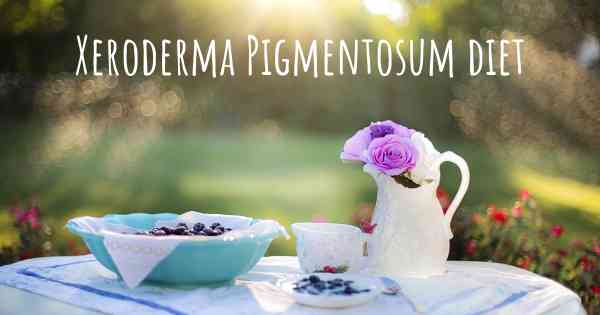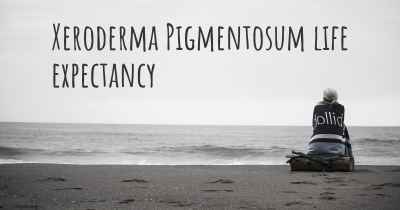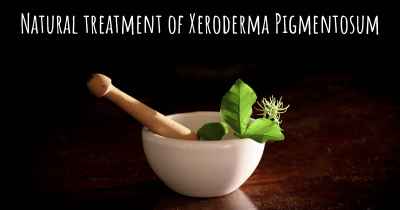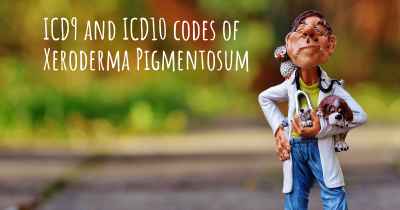Xeroderma Pigmentosum diet. Is there a diet which improves the quality of life of people with Xeroderma Pigmentosum?
Are you aware of a diet that can improve the quality of life of people with Xeroderma Pigmentosum? Is there a diet that is suggested to avoid when having Xeroderma Pigmentosum? See if there is a diet that can improve the quality of life of people with Xeroderma Pigmentosum, recommended and to avoid food when having Xeroderma Pigmentosum

Xeroderma Pigmentosum Diet: Improving Quality of Life
Xeroderma Pigmentosum (XP) is a rare genetic disorder characterized by extreme sensitivity to ultraviolet (UV) radiation from sunlight. Individuals with XP have a defective DNA repair mechanism, which leads to a higher risk of developing skin cancer and other complications. While there is no specific diet that can cure or treat XP, adopting a healthy lifestyle and making certain dietary choices can help improve the quality of life for people with this condition.
The Importance of Sun Protection
Since UV radiation is the primary trigger for XP symptoms, it is crucial for individuals with XP to minimize their exposure to sunlight. Wearing protective clothing, including long sleeves, hats, and sunglasses, is essential to shield the skin and eyes from UV rays. Additionally, using broad-spectrum sunscreen with a high sun protection factor (SPF) is recommended. Sunscreen should be applied generously and reapplied every two hours, especially when spending time outdoors.
Antioxidant-Rich Foods
Antioxidants play a vital role in protecting the body against damage caused by free radicals, which are produced when the skin is exposed to UV radiation. Including foods rich in antioxidants in the diet can help reduce oxidative stress and inflammation associated with XP. Some excellent sources of antioxidants include:
- Colorful fruits and vegetables: Berries, citrus fruits, leafy greens, bell peppers, and tomatoes are packed with antioxidants like vitamin C, beta-carotene, and lycopene.
- Nuts and seeds: Almonds, walnuts, flaxseeds, and chia seeds are high in antioxidants, healthy fats, and essential nutrients.
- Green tea: Known for its potent antioxidant properties, green tea can be a beneficial addition to the diet.
Omega-3 Fatty Acids
Omega-3 fatty acids are known for their anti-inflammatory properties and can help reduce inflammation in the body. Including foods rich in omega-3s can be beneficial for individuals with XP. Some good sources of omega-3 fatty acids include:
- Fatty fish: Salmon, mackerel, sardines, and trout are excellent sources of omega-3s.
- Flaxseeds and chia seeds: These seeds are not only rich in antioxidants but also provide a good amount of omega-3 fatty acids.
- Walnuts: Walnuts are a great plant-based source of omega-3s.
Vitamin D Supplementation
Individuals with XP often have limited sun exposure due to their extreme sensitivity to UV radiation. This can lead to a deficiency in vitamin D, which is primarily synthesized by the body through sunlight exposure. Consulting with a healthcare professional to determine if vitamin D supplementation is necessary is recommended to maintain adequate levels of this essential vitamin.
Hydration and Skin Health
Proper hydration is essential for maintaining healthy skin. Drinking an adequate amount of water throughout the day can help keep the skin hydrated and improve its overall health. While hydration alone cannot prevent XP symptoms, it can contribute to the general well-being of individuals with this condition.
Consulting a Healthcare Professional
It is important to note that while dietary choices can support overall health, there is no specific diet that can cure or treat XP. Individuals with XP should consult with a healthcare professional or a registered dietitian who can provide personalized guidance based on their specific needs and medical history.
By adopting a healthy lifestyle, including sun protection measures, consuming antioxidant-rich foods, incorporating omega-3 fatty acids, considering vitamin D supplementation, and staying hydrated, individuals with Xeroderma Pigmentosum can improve their quality of life and support their overall well-being.








